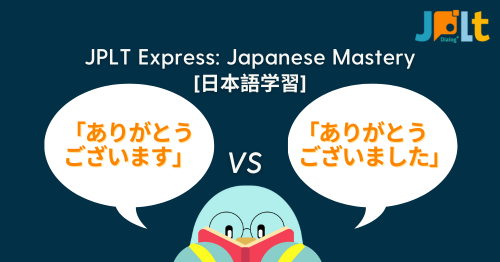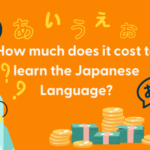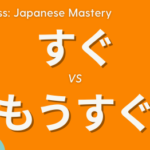What is the difference between “ありがとうございます” (arigatou gozaimasu) and “ありがとうございました” (arigatou gozaimashita)?
“When I say ‘ありがとうございます’ (Thank you) and ‘ありがとうございました’ (Thank you very much), they seem the same to me…”
“In a certain situation, when I said ‘ありがとうございました!’ (Thank you very much!), I was told that’s not the right usage…”
“Please clearly explain the difference between ‘ありがとうございます’ and ‘ありがとうございました’!”
For beginners learning Japanese, understanding the difference between “ありがとうございます” and “ありがとうございました” is important.
Below, Eri-san from JPLT Online Japanese Language School provides a clear explanation with specific examples.
■ “ありがとうございます” (Arigatou gozaimasu)
“ありがとうございます” expresses gratitude in the present. This expression is used when you are currently feeling thankful or when you are in a situation where you continue to feel thankful.
Examples:
When receiving a gift:
- 「素敵なプレゼントをありがとうございます。」 (Suteki na purezento o arigatou gozaimasu): Thank you for the wonderful gift.
When receiving help:
- 「手伝ってくれて、ありがとうございます。」 (Tetsudatte kurete, arigatou gozaimasu): Thank you for helping me.
■ “ありがとうございました” (Arigatou gozaimashita)
“ありがとうございました” expresses gratitude for something that has already happened. It shows appreciation for actions or events that are completed.
Examples:
After an event:
- 「昨日のパーティーに来てくれて、ありがとうございました。」 (Kinou no paatii ni kite kurete, arigatou gozaimashita): Thank you for coming to the party yesterday.
After receiving help with work:
- 「先日のプロジェクトを手伝ってくれて、ありがとうございました。」 (Senjitsu no purojekuto o tetsudatte kurete, arigatou gozaimashita): Thank you for helping with the project the other day.
■ Specific Differences
Present vs. Past Gratitude:
- “ありがとうございます” is for expressing gratitude in the present moment.
- “ありがとうございました” is for expressing gratitude for past events or actions.
Immediate Actions:
- Present Gratitude: Used when someone has done something recently.
- Example: Saying “ありがとうございました” to a cashier indicates that the purchase is already completed.
- Past Gratitude: Used for expressing thanks for something done in the past.
- Example: Saying “ありがとうございました” to a friend for past help.
■ Summary
What is the difference between “ありがとうございます” and “ありがとうございました”?
The difference between “ありがとうございます” and “ありがとうございました” lies in the timing of the gratitude. “ありがとうございます” is used to express current, ongoing gratitude, while “ありがとうございました” is used to express thanks for completed events or actions. Using these expressions appropriately depending on the situation will allow you to convey your gratitude more accurately.
JPLT Online Japanese Language School offers effective learning methods through individual and group lessons. The teachers explain in detail why certain expressions are not used and support you in improving vocabulary and practical conversation skills to speak Japanese naturally.





